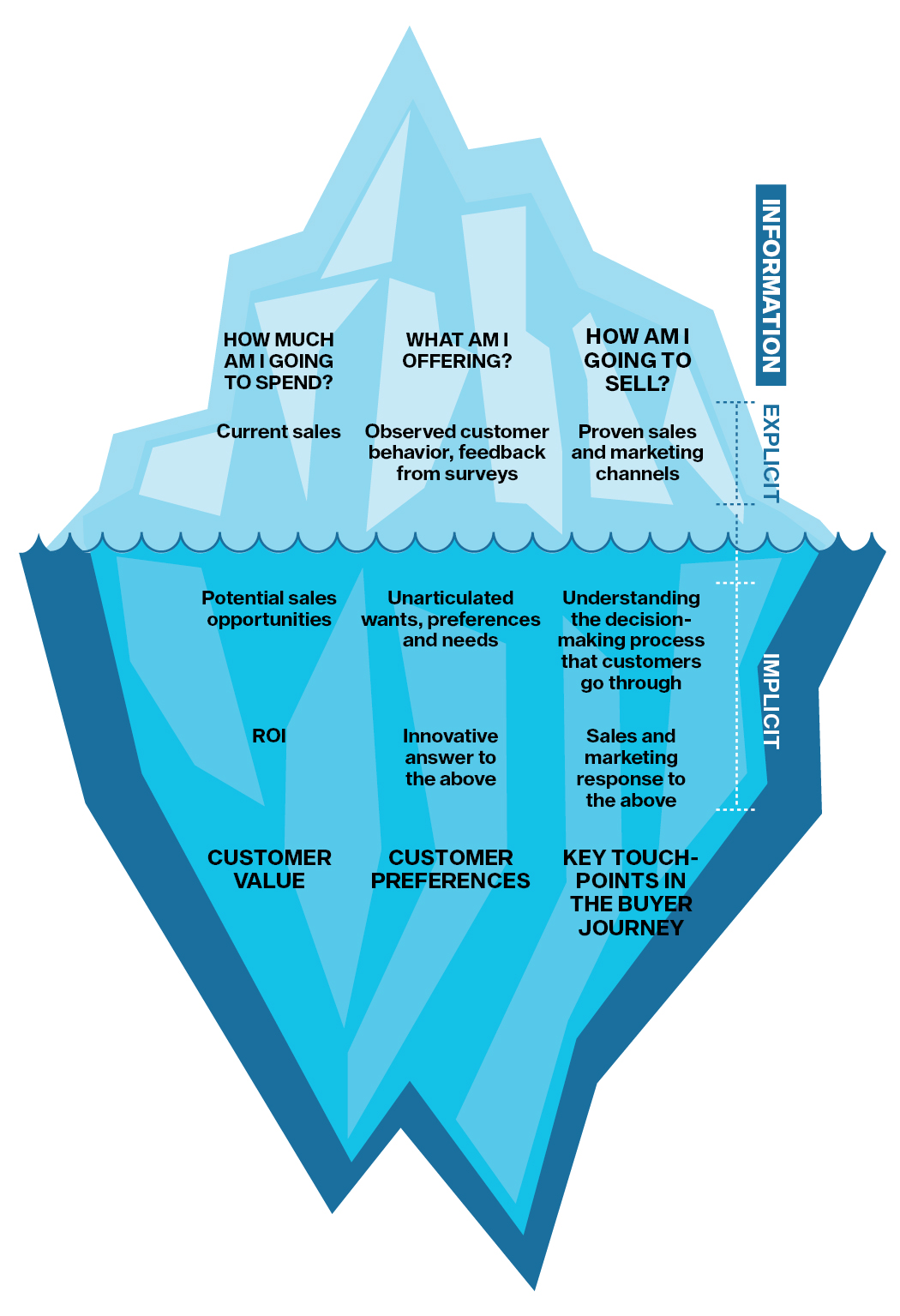
IESE Insight
Take the iceberg challenge for better segmentation
When it comes to market segmentation, key factors for your business may lie beneath the surface. Learn to dive deep and develop a more profound understanding of your customers with the "iceberg challenge" proposed by IESE marketing professor Jorge Gonzalez.
The marketing guru Ted Levitt's age-old observation that there's no such thing as "the customer" remains as true today as it was when he asserted it back in the 1960s. Customers come in all shapes and sizes, and not taking their peculiarities into account when making sales and marketing decisions is a recipe for disaster.
"In marketing, there are few analyses as important as accurately identifying your major customer market segments, determining their size and correctly describing them with their key characteristics," writes IESE marketing professor Jorge Gonzalez in his technical note on "Market Segmentation." Understanding your customer groups not just by their similarities but their differences helps you allocate resources more efficiently as you plan, design and carry out wise actions that deliver as intended.
To aid in this effort, Gonzalez presents his own useful framework, which he calls "the iceberg challenge." Based on the idea that there's a lot more to an iceberg than meets the eye, he acknowledges that surface-level analyses may be a logical starting point; however, he urges marketers not to stop there but to delve deeper until they arrive at more profound customer insights.

Sales and marketing departments typically start off with three basic questions: How much am I going to spend?, what am I offering? and how am I going to sell?
The first is important for deciding resource allocation, the second relates to how the product or service will be designed to serve customers, and the third determines which sales and distribution channels to use. These three are fundamental operational questions. And to answer them, marketers usually start by gathering the obvious information.
So, to gauge how much to invest or spend in our next marketing effort, we may use current sales levels as our guide. To design our new product or service offering, we may consider what we already know about our customers, based on observing their behavior or feedback we've gathered from customer surveys. And to decide the right channel, we may check which channels have worked well for us in the past.
So far, so logical. But these are the pieces that appear above the surface. For better, more meaningful customer segmentation and decision-making, Gonzalez recommends going beneath the surface.
Taking a deep dive
Going deeper means exploring not just current but potential sales opportunities; responding not just to what customers are telling us they want but tapping into their unarticulated wants, preferences and needs; not just using tried-and-trusted channels but understanding the decision-making process that customers go through, so that we can reach them at just the right moment of the buyer journey.
This essentially flips the original three questions. So, for example, it's no longer how much we're going to spend, but rather, what's the return on investment (ROI)? The aim is to tease out more profound questions that push to the fore customer values (rather than just their outward behavior) and to come up with more innovative responses than just pulling the same old sales levers that may have worked in the past but may no longer be appropriate for the new offer. It's going from explicit information to gathering key customer information that is more implicit or less observable.
In this way, we deepen our segmentation to reach new levels of abstraction -- and insight. Thus, our marketing s
pend can be targeted at those who yield the most value. Our offer is tailored to genuine customer preferences. And we sell, not by doing things the same old way, but by reaching customers at the exact right moment in their journey when they are most predisposed to buy.
In his note, Gonzalez details some of the methodologies available to get at this deeper level of insight, recognizing that implicit knowledge is harder to get at, given its nebulous nature. He uses the examples of a pharmaceutical lab and a restaurant chain to show the many practical ways that marketers can arrive at more meaningful customer analyses and market segmentation. Crucially, he shows how marketers can plumb the depths without "suffocating themselves from a lack of oxygen" in the process.
